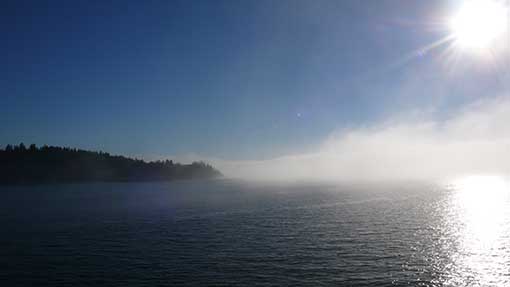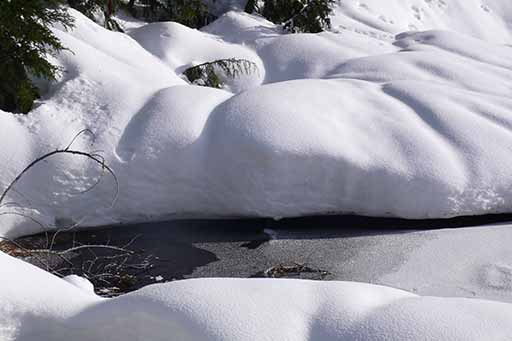Something to keep in mind…
If you read only one book this year,
…
it should be Roger Hallam’s
…
“Common Sense for the 21st Century”
…
Chris Hedges
..
.

With climate change at the forefront of the global agenda, over 25,000 politicians, lobbyists and influencers will make their way to Madrid for the UN’s summit next month.
COP25 CHILE MADRID 2019 #TiempoDeActuar
COP25 11-22-19
The Conference of the Parties (COP) is the supreme decision-making body of the United Nations Framework Convention on Climate Change (UNFCCC).
At this 25th edition organized and presided by Chile, to be held December 2-13 in Madrid, Spain, the 197 Parties that make up the treaty – 196 nations plus the European Union – will seek to move towards the implementation of the agreements that have been reached under the Convention that lays down specific obligations for all Parties to fight climate change.
The first COP was held in Berlin in 1995. To date, 24 COPs have taken place, the last one in Katowice, Poland, in December 2018.
The COP25 Presidency, which will be led by Minister Carolina Schmidt, starts in December 2019 and ends in December 2020.
COP25 Climate Change Conference
WHO 11-22-19
The previous UN climate conference, COP24 in Katowice Poland, focused on completing work on the Paris Agreement Work Programme, a set of decisions meant to operationalize the treaty. Parties adopted a Climate Package, which includes decisions on nearly all of the issues mandated as part of the Paris Work Programme.
COP25 in Santiago was mandated by the UNFCCC to resolve the outstanding issues in the Climate Package, including:
• provisions under Article 6 of the Paris Agreement, which would allow countries to meet, in part, domestic mitigation goals through market mechanisms such as carbon markets;
• public registries for Nationally Determined Contributions (NDCs) to the Paris Agreement;
• communications of adaptation efforts under the Paris Agreement,Additionally, COP25 will discuss a number of issues relevant to WHO’s work on climate change and human health, including:
• the Warsaw International Mechanism for Loss and Damage associated with Climate Change Impacts (WIM);
• international climate finance;
• capacity building;
• matters relating to least developed countries (LDCs);
• the forum on the impact of the implementation of response measures;
• gender and climate change;
• the second review of the adequacy of UNFCCC Article 4 (Commitments).The UNFCCC subsidiary bodies will discuss several additional issues that are relevant to the climate-health nexus, including:
• Common time frames for Nationally Determined Contributions (NDCs) to the Paris Agreement
• The Koronivia joint work on agriculture;
• National adaptation plans (NAPs)
• The Local Communities and Indigenous Peoples Platform (LCIPP)
COP25 to keep ocean focus despite moving to Madrid
Eco Business 11-20-19
“I expect that the focus on the ocean at COP25 will be maintained regardless of the change of venue,” said Rémi Parmentier, coordinator of Because the Ocean – an initiative comprising more than 30 countries, including Chile and Spain, to bring the ocean into climate change policy.
The global ocean regulates the climate by exchanging energy and water with the atmosphere. Ocean currents distribute heat from the tropics to the poles and down into the deep sea, determining rainfall patterns and surface temperatures, which in turn influence regional climates.
The ocean has absorbed about 93 per cent of the excess heat from greenhouse gas emissions since the 1970s. The increasing water temperature is dramatically changing ocean circulation and thermal stratification, increasing ice melt and exacerbating sea-level rise.
Towards COP25 and European Green Deal: EU cities and regions are on board
COR 11-22-19
The European Committee of the Regions is looking forward to the COP25 climate summit in Madrid as an opportunity to formally acknowledge the key role of the EU’s cities and regions in strategic climate governance and ensure their adequate engagement in reducing greenhouse emissions. …
“We very much welcome the European Green Deal, which for the first time puts sustainability at the heart of all EU policies. The Deal must follow a place-based approach to ensure that the challenges faced by our cities and regions are addressed with the right tools, resources and funding. Given our competences and our closeness to the citizens, we are committed to shaping the policies under the Green Deal and to delivering these on the ground for the benefit of our planet and our people”.
Madrid Steps In as EU Targets COP25
South EU Summit 11-22-19
Minister Schulze hopes that this year’s COP25 will pave the way to an agreement regarding an international credit system for carbon emission certificates and will close off many of the existing current loopholes under the 1997 Kyoto Protocol. One such loophole can be found in Article 6 of this agreement, which allows states to finance environmental measures in other countries and use those carbon savings to offset against their national carbon outputs.
Meanwhile, COP25’s former host, Chile, is considered a leader in oceanic protection and aims to position global warming’s impact on the ocean as a central topic for the conference. The subject will be of high priority on the agenda despite not having been so in the past, and rides on the heels of a report released by the Intergovernmental Panel on Climate Change that speaks to the significant and irreversible changes the earth’s oceans are experiencing in response to climate change. …
Another point of discussion will be the Warsaw Mechanism, which was designed to provide financial and technical assistance to regions severely affected by climate change. Currently, the Green Climate Fund, aimed at financing this assistance, sits at approximately 6 billion euros. There is hope that this number will increase to 100 billion euros when the Paris Agreement comes into effect in 2020, with COP25 providing the opportunity needed to obtain guarantees of increased funding from nations across the globe.
Join Rebels Beyond Borders on tour for COP25 climate conference in Madrid! #TiempoDeActuar
XR 11-23-19
XR groups from 19 countries will make their way across Europe to join XR Spain in an international effort to bear witness to COP25 (United Nations Climate Conference), being held in Madrid on 2-13th December 2019. At COP25, delegates will come together from all over the world to make commitments on how to implement the Paris Climate Agreement and accelerate the global response to the Climate and Ecological Emergency.
Rebels will raise the alarm with non-violent direct action to reach the hearts of those with the power to make systemic change on an international scale. Expect a series of beautiful creative actions, including ‘The Dead Sea March’ and some lively ‘Civil Disco-bedience’. XR will also take part in the ‘Social Summit for Climate’, where 150 grassroots organisations will join together to prove that the people have the power!

HOT AIR NEWS ROUNDUP
This Week’s Highlights
‘Incredible’: Hundreds of Harvard and Yale Students Storm Football Field Demanding Divestment From Fossil Fuels
Common Dreams 11-23-19
During halftime of the annual football game between Harvard and Yale on Saturday, hundreds of students and alumni stormed the field demanding that the elite universities divest completely from fossil fuels and cancel their holdings in Puerto Rican debt.
An estimated 500 students and alumni gathered and at sat down at mid-field, holding signs that condemned Harvard and Yale for being “complicit in climate injustice” and chanting “fossil fuels have got to go!” The protest delayed the football game, which was being aired live on ESPN, for nearly an hour. Demonstrators who refused to leave the field voluntarily were arrested.
Climate Change Is Going to Supercharge Waves
Hakai 11-22-19
New research by scientists with the Coordinated Ocean Wave Climate Project (COWCLIP) reduces some of this uncertainty and shows that, if unchecked, climate change will significantly alter how and where waves break—with potentially catastrophic consequences. Since the 1990s, scientists have been projecting changes in global sea level, but they have not been able to accurately predict trends in waves. …
The improved model found that if the climate warms beyond 2 °C, the size, intensity, and direction of waves across half of the world’s oceans will drastically change by the end of the century. In some parts of the northern hemisphere, like the east coast of the United States, waves will get smaller and weaker; in other areas, such as on Australia’s southern coast, waves will get bigger and more powerful. If countries fail to rein in carbon emissions, the waves that break on southern Australia will be 15 percent larger by 2100. In some places, these changes are already happening.
Woman saves koala from Australian brush fires
WSIS 11-20-19
This little fella was rushed to the hospital, after being rescued from a brush fire in Australia. A viral video shows the koala bear crossing the road and getting stranded near the flames. But then, a woman rushed in, using her own shirt to wrap up the koala and move it out of harm’s way. She doused the koala with water, as it squealed in pain from its burns.
If you want to cut global temperatures try building with bamboo, say UK-based researchers studying its thermal properties…
Building with bamboo can cool the climate
Climate News Network 11-20-19
There could be a way of countering one key aspect of the climate emergency by making much greater use of a widely-available plant: by building with bamboo. Bamboo is already one of the most widely-used and versatile natural materials on the planet; foods, medicines and cooking utensils, musical instruments, clothes and furniture are made from it.
It’s used as well for scaffolding, floor coverings, bicycle frames, promoting fertility in cattle – and for brewing beer. Now researchers say increasing the use of bamboo in the building sector could play a big role in fighting climate change. A study by researchers at Cambridge University in the UK and the University of Natural Resources and Life Sciences in Vienna, Austria, published in the journal Scientific Reports, examined bamboo’s structure and how heat flows through it, a process known as thermal conductivity.
Weights show the way to cheap stored power
Climate News Network 11-22-19
Finding effective ways to store energy until it’s needed is a major obstacle for the renewable electricity revolution, but two new mechanical systems mean cheap stored power could soon be widely available.
Cheaper than batteries, both have the virtue of being able to produce full power within a second of being switched on. And the energy they generate can also be stored for months without any loss of power. …
They use surplus electricity from renewables (wind or solar power) to winch a weight up a mineshaft or a mountain. When there’s a need to generate more electricity, the weight is released to fall to the bottom again, turning turbines attached to it by cables and so providing instant power to the grid.
Climate emergency: world ‘may have crossed tipping points’
The Guardian 11-27-19
Prof Tim Lenton at the University of Exeter, the lead author of the article, said: “We might already have crossed the threshold for a cascade of interrelated tipping points. The simple version is the schoolkids [striking for climate action] are right: we are seeing potentially irreversible changes in the climate system under way, or very close.” “As a scientist, I just want to tell it how it is,” he said. “It is not trying to be alarmist, but trying to treat the whole climate change problem as a risk management problem. It is what I consider the common sense way.” Phil Williamson at the University of East Anglia, who did not contribute to the article, said: “The prognosis by Tim Lenton and colleagues is, unfortunately, fully plausible: that we might have already lost control of the Earth’s climate.”

ADAPTION AND RESILIENCE
Solar, Storage & Electric Taxis; Dundee demonstrates what’s doable
[VIDEO]
Book review,
Sense for the 21st Century
by Roger Hallam, cofounder of Extinction Rebellion…
Common Sense for the 21st Century
Chelse Green 11-19-19
What can we all do to avert catastrophe and avoid extinction? Roger Hallam has answers. In Common Sense for the 21st Century, Roger Hallam, cofounder of Extinction Rebellion, outlines how movements around the world need to come together now to start doing what works: engaging in mass civil disobedience to make real change happen. The book gives people the tools to understand not only why mass disruption, mass arrests, and mass sacrifice are necessary but also details how to carry out acts of civil disobedience effectively, respectfully and nonviolently. It bypasses contemporary political theory, and instead is inspired by Thomas Paine, the pragmatic 18th-century revolutionary whose pamphlet Common Sense sparked the American Revolution.
How to Save the Planet and Ourselves
Truthdig 11-18-19
If you read only one book this year, it should be Roger Hallam’s “Common Sense for the 21st Century: Only Nonviolent Rebellion Can Now Stop Climate Breakdown and Social Collapse.” Hallam’s lucid and concise book, which echoes Thomas Paine’s “Common Sense,” says what many of us now know to be true but do not say: If we do not replace the ruling elites soon we are finished as a species. It is a cogent, well-argued case for global rebellion—the only form of resistance that can save us from ecosystem collapse and human-induced genocide. It correctly analyzes the failure of environmentalist activists in groups such as 350.org to understand and confront global corporate power and thus make a meaningful impact as we barrel toward ecocide. “Common Sense for the 21st Century” is a survival manual for the human species.
Samoa climate change resilience challenges Western perceptions
Science Daily 11-22-19
The resilience of Samoan communities in the face of climate change is providing a blueprint for other nations to follow, according to Samoa and Otago researchers. …
More than 70 per cent of Samoa’s population lives in 330 rural villages across Upolu and Savaii, and most of the country’s infrastructure, population and development is near the coastline. The researchers found villagers had a heightened awareness of climate change and noticed hotter days and longer dry spells, shorter periods of rainfall, stronger damaging winds, and sea level rise. However rather than despairing at the prospect, villagers have developed a pragmatic and positive approach to impending climate changes. Past natural disasters such as Cyclones Ofa and Val in the 1990s had a devastating effect on many communities, but the recovery period also brought opportunities for developing tighter social connections, new food supplies and infrastructural development and, in some cases, village relocation.
Sustainable Transport Key to Tackling the Climate Crisis
UNFCCC 11-21-19
The critical role of the transport sector in achieving the goal of the Paris Climate Change Agreement to keep global temperature rise to well below 2 degrees Celsius above pre-industrial levels was the theme of a high-level Global e-Mobility Forum held in Warsaw, Poland, from 20 to 21 November. …
Over 1 billion passenger cars travel the streets and roads of the world today, and by 2040, that number is set to double to 2 billion at least. The UN Intergovernmental Panel on Climate Change has stressed that without aggressive and sustained emission reduction policies being implemented, transport emissions could increase at a faster rate than emissions from other sectors. The Forum addressed the social, environmental and economic challenges related to the global development of zero emissions transport. This includes effective strategies for developing sustainable transport that is affordable for everyone, as well as adopting new business models, with new forms of partnerships and ownership, and access to capital.
How Tesla’s Model Y Compares To Ford’s New EV
Business Insider 11-20-19
Ford recently revealed its first-ever all-electric vehicle, the Mustang Mach-E. Despite having the iconic Mustang badge on its front and rear bumpers, the Mach-E is far from a pony car, similar in size to Tesla’s upcoming Model Y crossover. So just how does the Mach-E stack up against the next car in line for the biggest name in electric cars?
Chattanooga looks to extend electric bus range with wireless charging
Energy News 6-17-19
The charging station was developed by Momentum Dynamics, a Pennsylvania company that installed the country’s first inductive electric bus charging station, a 50-kilowatt unit, in Howard County, Maryland, in 2017. The company also built a 200-kilowatt unit like Chattanooga’s last year in Wenatchee, Washington. Chattanooga’s is the nation’s third such application for a public transit system. The units use coils installed below ground, powered by electricity, to generate an electromagnetic field. Separate coils on the underside of buses absorb the energy, excite electrons, and convert the energy to electricity that is stored in bus batteries. The coils deploy the same inductive electrical principles that are now used to charge cell phones. The magnetic field is confined to the space between the charging unit and the underbelly of the bus.
Meet Allan Savory, the Pioneer of Regenerative Agriculture
Agriculture.com 3-8-18
Despite the historic drought, Springs Ranch was now producing 40% more forage than before Spencer and Abbey took charge—allowing them to increase their cattle numbers from 150 to 230, about four times as many per acre as nearby ranches keep on similar land. Costs dropped, too, because they no longer had to buy fertilizer or spend money on tractor fuel (and put in 80 hours of labor) to harrow hardened cow pies into the soil. When we gathered for a cup of coffee in the ranch-house kitchen, Spencer’s father, Steve, an older, gruffer version of his son, said, “The land has gotten a hell of a lot better, although I’d never admit it to him.” He tipped his head toward Spencer. “There’s a lot more biology in the soil. We rely less on the cowboy stuff and more on nature.” …
In fact, there are dramatically different ways to produce beef. Virtually all cows spend their early lives eating grasses and other forage on open pasture. But after about a year, most of them—97% in the United States—get trucked to large, centralized feedlots where they are fattened with grain (also trucked to the feedlots) before slaughter. This system of finishing cows at feedlots is energy-intensive and produces high carbon emissions. …
As for why there is disagreement among scientists, Teague suggests studies disputing Savory’s methods don’t accurately replicate conditions on actual ranches. Such research is often too short-term to allow grasses to regrow and is conducted on tiny experimental plots of land rather than working farms. Ultimately, he says, they don’t take into account the most important feature of range management: the human element and the skill and attention to detail—knowing the right moment to move your animals, for example—that successful farmers bring to the equation.

LEGISLATION, ELECTIONS & POLICY
Offering National Model, This New England Town Just Banned Natural Gas and Oil in New Home Construction
Common Dreams 11-22-19
By an overwhelming margin Wednesday night, Brookline Town Meeting voted to ban oil and gas piping in future construction projects, becoming the first community in Massachusetts to pass such a measure. And while over 15 cities in California have passed similar bans, Brookline’s bylaw goes further, prohibiting the installation of new oil and gas infrastructure in gut renovations, in addition to new buildings. Supporters say the bylaw will singlehandedly decrease carbon emissions from buildings in Brookline — which account for about two-thirds of the town’s overall emissions — by 15 percent over the next 30 years. It passed by a vote of 207 to 3 and is slated to take effect on Jan. 1, 2021.
Climate change activists urge Los Angeles not to build a gas plant in Utah
LA Times 11-19-19
LADWP is working to shut down the facility by 2025. It’s the last coal plant serving customers in California, and L.A.’s largest source of power. The utility plans to replace Intermountain in part with an $865-million plant that runs on natural gas. Gas generates less planet-warming carbon dioxide than coal when burned. But it still contributes to rising global temperatures and climate change consequences including more destructive wildfires, droughts, floods and heat waves. In a letter to Garcetti and the mayors of Burbank and Glendale — which are partnering with L.A. to build the gas plant — a coalition of environmentalists pointed out that Los Angeles City Council recently voted to declare a “climate emergency.”
MEPs to press Commission to declare “state of climate emergency” in Europe
The Parliament 11-22-19
The resolution is backed by several mainstream groups, including the Greens, Renew Europe (RE) and the Socialists, the second biggest in the assembly. Speaking at a news briefing in Parliament on Friday, a Socialist group spokesman said its leader, Spanish member Iratxe García Pérez, will call on the incoming new European Commission “to take concrete action on climate action.” An RE spokesman, speaking at the same pre-plenary press conference, said, “We decided to put forward this resolution because we urgently need to declare a state of emergency in Europe.”
EU 2020 budget boosts climate action spending
Climate Change News 11-23-19
The EU Parliament and member states have agreed a deal on the bloc’s 2020 budget, which boosts spending for climate action. The budget is the last annual spending plan of the EU’s seven-year budget, running the start of 2014 to the end of 2020. The EU has committed to finance projects worth €168.7 billion ($186.8bn), of which 21% will go to measures to address climate change. The bloc had a target to dedicate at least 20% of its expenditure to climate protection in the period 2014-2020.

THE FIRES
‘Code Red’ alert issued as Australia fires continue to burn
RTE 11-21-19
Firefighters are continuing to battle nearly 200 bushfires across eastern Australia, while authorities have issued a Code Red alert for parts of Victoria State. Sydney has also been blanketed in hazardous smoke for the third consecutive day. Officials imposed a total fire ban across Victoria where temperatures were expected to peak above 40C and warned people in high danger areas to be prepared to evacuate. …
Firefighters have followed the crisis across four states as extreme temperatures and high winds sparked wildfires in new areas, even as they struggle contain existing fires. The unrelenting conditions have sharpened attention on the climate change policies of Prime Minister Scott Morrison, who rejected any link.
Excellent article…
The planet is burning: Wild, feral and fossil-fuelled, fire lights up the globe. Is it time to declare that humans have created a Pyrocene?
Aeon 11-20-19
To many observers, they appear as the pilot flames of an advancing apocalypse. Even Greenland is burning. But the fires we see are only part of our disturbed pyrogeography. Of perhaps equal magnitude is a parallel world of lost, missing and sublimated fires. The landscapes that should have fire and don’t. The marinating of the atmosphere by greenhouse gases. The sites where traditional flame has been replaced by combustion in machines. The Earth’s biota is disintegrating as much by tame fire’s absence as by feral fire’s outbreaks. The scene is not just about the bad burns that trash countrysides and crash into towns; it’s equally about the good fires that have vanished because they are suppressed or no longer lit. Looming over it all is a planetary warming from fossil-fuel combustion that acts as a performance enhancer on all aspects of fire on Earth. So dire is the picture that some observers argue that the past is irrelevant. We are headed into a no-narrative, no-analogue future. …
And then consider the ways in which the rhythms of fire engines are replacing the Milankovitch pacemaker. The Milankovitch rhythms acted as a rheostat that modulated the swings into and out of ice. The wholesale combustion of fossil biomass is similarly recalibrating the Earth’s climate and redefining how people in the developed world live on the land. By burning fuels from deep time, we are redefining the options available for generations to come.
Great article…
Massive Australian blazes will ‘reframe our understanding of bushfire’
Science 11-20-19
The geographical scale and intensity—it’s happening all up and down the country. The very early start to the fire season across eastern Australia. The scale of housing loss. We’re seeing recurrent fires in tall, wet eucalypt forests, which normally only burn very rarely. A swamp dried out near Port Macquarie, and organic sediments in the ground caught on fire. When you drop the water table, the soil is so rich in organic matter it will burn. We’ve seen swamps burning all around. Even Australia’s fire-adapted forest ecosystems are struggling because they are facing increasingly frequent events. In Tasmania, over the past few years we have seen environments burning that historically see fires very rarely, perhaps every 1000 years. The increasing tempo, spatial scale, and frequency of fires could see ecosystems extinguished.
Black carbon found in the Amazon River reveals recent forest burnings
PHYS ORG11-20-19
Besides swathes of destroyed vegetation, forest fires in Amazonia leave their imprint on the Amazon River and its tributaries. Incomplete burning of trees results in the production of black carbon, solid particles that enter the waters of the Amazon in the form of charcoal and soot and are transported to the Atlantic Ocean as dissolved organic carbon. For the first time, an international group of researchers have quantified and characterized the black carbon flowing in the Amazon River. Their findings, published in Nature Communications, show that most of the black carbon transported to the ocean is “young” and probably results from recent forest fires.
Study: Wildfires in Oregon’s blue mountains to become more frequent, severe due to climate change
EurekAlert 11-20-19
Under a warming climate, wildfires in Oregon’s southern Blue Mountains will become more frequent, more extensive and more severe, according to a new Portland State University-led study. Researchers from PSU, North Carolina State University, University of New Mexico and the U.S. Forest Service looked at how climate-driven changes in forest dynamics and wildfire activity will affect the landscape through the year 2100. They used a forest landscape model, LANDIS-II, to simulate forest and fire dynamics under current management practices and two projected climate scenarios. Among the study’s findings: (1) Even if the climate stopped warming now, high-elevation species such as whitebark pine, Engelmann spruce and sub-alpine fir will be largely replaced by more climate- and fire-resilient species like ponderosa pine and Douglas fir by the end of the century. (2) A growing population of shade-loving grand fir that has been expanding in the understory of the forest was also projected to increase, even under hotter and drier future climate conditions, which provided fuels that helped spread wildfires and made fires even more severe.

THE ARCTIC
Icebergs as a source of nutrients: Will climate change lead to more iron fertilization in the ocean?
Science Daily 11-20-19
Sea creatures, whether large or small, need nutrients. The supply mechanism delivering these nutrients is very different in different parts of the ocean, there are nutrient-rich coastal areas, but also very nutrient-poor regions in the open ocean. In some areas, the lack of iron in seawater limits plankton growth. These include much of the polar oceans. Here, icebergs appear to be an important source of iron input, which could increase due to increased iceberg production as a result of climate change.
Stunted Growth in Arctic Sea Ice Refreeze
Paul Beckwith 11-20-19
Arctic sea ice behavior continues to surprise us. In August as it approached the September minimum, ice loss stalled out, and as it refroze in October/November ice growth stalled again. The high Arctic above 82.5 degrees latitude was 7 degrees C warmer than normal for October. The jet streams crossed Greenland pushing warm air northward into the Arctic Ocean forming a strong cyclone bringing lots more heat and high winds over the struggling sea ice.
A Frozen Realm: Inside the East Antarctic Ice Sheet
Category 6 11-21-19
Snow accumulation and sea level rise: a complex picture. My specific role in EAIIST focuses on improving our interpreation of ice core records in order to better understand how snow accumulation rates have changed in East Antarctica. This is important because snow falling on top of an ice sheet counteracts the loss of ice when icebergs break off (or calve) at the coast and then melt in the ocean. Conditions are too cold for direct melting of the ice sheet surface to be a factor in Antarctica. In a stable ice sheet, the amount of ice lost at the coasts is compensated by the amount of new snow that falls inland on the ice sheet. If more ice breaks away than new snow falls, the ice sheet will shrink and sea level will rise. Likewise if more snow falls than ice is lost to calving, the ice sheet will grow, more of Earth’s water will be stored as ice on land, and sea level will fall. This is known as the glacial mass balance.
There’s change afoot even where scientists least expect it, among the Arctic’s oldest ice. If it goes, so does the wildlife…
Arctic’s oldest ice shows signs of change
Climate News Network 10-21-19
Stretches of the Arctic’s oldest ice, and its thickest – the last refuge ice that should survive even when the Arctic Ocean technically becomes ice-free in summers later this century – are now disappearing twice as fast as the rest of the Arctic icecap. Although the north polar ice is vulnerable to global heating, and has been thinning and retreating at an accelerating rate for the last 40 summers, researchers have always expected some winter ice to survive: they define an “ice-free Arctic Ocean” as one with less than 1 million square kilometres of surviving ice pack. But this supposedly ancient remnant of the polar winters, concentrated north of Greenland and the Canadian polar archipelago, is showing signs of change.
FOSSIL FUELS
With Coal’s Decline, Pennsylvania Communities Watch the Rise of Natural Gas-fueled Plastics
DeSmog 11-22-19
For Beaver County, just northwest of Pittsburgh, the construction of Royal Dutch Shell’s towering new plastics factory overshadows the closure of the Bruce Mansfield Power Plant, the state’s largest coal power station, located along the same stretch of Ohio River in western Pennsylvania. The juxtaposition of these two projects, in which one powerful fossil fuel supply rises as the other falls, reflects the broader pattern of changing energy sources in America. A growing chorus agrees the expansion of the natural gas industry, which feeds plastics and petrochemical plants like Shell’s, is moving the U.S. in the wrong direction to prevent catastrophic impacts from climate change.
Good article…
World’s Current Fossil Fuel Plans Will Shatter Paris Climate Limits, UN Warns
DeSmog 11-20-19
The Production Gap Report, which was written by a collection of research institutions and published by the UN Environment Program, warns that even as governments commit to reduce greenhouse gas emissions, many continue to promote expanding fossil fuel production. While renewable energy sources, such as solar and wind power, are increasingly competing with oil, gas and coal as their prices fall, “there is no guarantee that fossil fuels and their greenhouse gas (GHG) emissions will decline—let alone at the pace needed to avoid dangerous climate change,” the report says. “The continued drive to increase fossil fuel production throughout the world only makes that harder,” it says. In the United States, the world’s top oil and gas producer, the report says state and federal subsidies and other policies are a significant factor driving surging output.
Fossil fuel production on track for double the safe climate limit: ‘We’re in a deep hole over the climate crisis and we need to stop digging,’ warn experts
The Guardian 11-20-19
The world’s nations are on track to produce more than twice as much coal, oil and gas as can be burned in 2030 while restricting rise in the global temperature to 1.5C, analysis shows. …
Scientists have warned that even the difference between 1.5C and 2C of heating will expose hundreds of millions of people to significantly higher risks of extreme heatwaves, drought, floods and poverty.
Dangerous levels of warming locked in by planned jump in fossil fuels output
National Geographic 11-20-19
Global governments plan to produce 120 percent more fossil fuels by 2030, drastically at odds with the 2.7 degrees Fahrenheit (1.5 degrees Celsius) warming limit they all agreed to under the 2015 Paris Climate Agreement. All major fossil fuel-producing nations—including the United States, China, Russia, Saudi Arabia, India, Canada, and Australia—have ambitious plans to increase production, according to a new report by leading research organizations and the United Nations. Carbon emissions from fossil fuel use totaled 37.1 billion tonnes in 2018, a new record. Substantially reducing those emissions will never happen without reducing fossil fuel production, says Michael Lazarus, a lead author of “The Production Gap Report” and the director of Stockholm Environment Institute’s U.S. Center.
Transportation Climate Initiative Draws Opposition from Oil and Gasoline Business Groups
DeSmog 11-23-19
As California continues to battle the Trump administration over the state’s authority to set stricter greenhouse gas emissions standards for vehicles, a coalition of East Coast states is facing a potential battle of its own, with opposition emerging to the states’ plan to tackle transportation emissions. That plan, called the Transportation and Climate Initiative (TCI), seeks to curb transportation-sector greenhouse gas emissions through a cap-and-invest program. The 12 Northeast and Mid-Atlantic states plus the District of Columbia are modeling it after the Regional Greenhouse Gas Initiative (RGGI), a similar cap-and-trade scheme for the power sector. As in RGGI, there would be a regional emissions cap that declines each year to reach a target emissions level. Each jurisdiction would be allocated a percentage of the overall cap as an “allowance budget.” Fuel suppliers would need to hold allowances, purchased at auctions, and the auction revenue would be invested in various clean energy and transportation priorities.
China coal surge threatens Paris targets
BBC 11-20-19
While the rest of the world has cut coal-based electricity over the past 18 months, China has added enough to power 31 million homes. That’s according to a study that says China is now in the process of building or reviving coal equivalent to the EU’s entire generating capacity. China is also financing around a quarter of all proposed coal plants outside its borders. Researchers say the surge is a major threat to the Paris climate targets.
WEATHER
BOMB CYCLONE: Flash Flood Watch For Kincade Fire Burn Zone; Blizzard Conditions In Sierra
CBS 11-26-19
A “bomb cyclone” forms when air pressure drops by 24 millibars in a 24-hour period. Forecasters said this storm’s air pressure has dropped even more quickly than that. The National Weather Service said the flash flood watch would run from 2 p.m. to 10 p.m. Tuesday for the more than 77,000 acres charred by last month’s massive Kincade Fire. “Moderate to briefly heavy rain rates are expected this evening as a cold front passes through the North Bay,” forecasters said. “The primary area of concern the Kincade Fire burn area as well as locations immediately downstream in northern Sonoma County. Rainfall rates of 0.50 to 0.75 inch per hour are briefly possible this evening.”
Rain brings ‘messy’ rush hour to L.A., evacuation warnings near Cave fire burn scar
LA Times 11-27-19
Residents at the base of a Santa Barbara County hillside that burned in this week’s Cave fire have been prompted to evacuate over concerns about debris flows as a strong storm begins to unleash rain across Southern California. County officials issued the evacuation warning for neighborhoods in Santa Barbara and Goleta shortly after 10 p.m. Tuesday, noting that “public safety officials have determined there is a risk for potential debris flows in and below the Cave fire burn area.”
Many farmers feel unprepared for increasingly extreme weather
Yale Climate Connections 11-21-19
When too much rain falls on farm fields, crops can rot, and the soil can wash away. But with too little rain, the plants can wilt. In the northeast U.S., both of these extremes are becoming more common. For example, in 2018, Pennsylvania had its wettest summer on record. “And then at the same time, in September, it was like drought conditions in Vermont and parts of Maine,” says Alissa White of the University of Vermont. “We’re just expected to see more of that.”
Relentless High Water Won’t Let Miami Go
Category 6 11-20-19
This is the autumn of Miami’s discontent. King tides driven by astronomical factors are a regular part of life on the Southeast coast in autumn, but in the last few months—and especially over the last few days—the high water keeps coming back, again and again, especially on the southeast coast of Florida. A slowly evolving nor’easter that followed a long period of onshore flow late last week led to flooding that was largely minor, but widespread and prolonged, in the Miami area and along other parts of the Southeast coast. Eight solid days of continuous minor flooding ended on Wednesday in Charleston, South Carolina.
It started raining in Sept and hasn’t stopped since: Half the average rainfall of November falls in the last 24 hours causing the Met Office to issue another 45 flood alerts in the UK
Robin Westernra 11-24-19
November has been a disaster for the UK after persistent torrential rain. The rain started in late September when Storm Lorenzo which brought strong winds to the west of Ireland before crossing the UK on 3rd October. Lorenzo was a mid-Atlantic hurricane but weakened rapidly as it tracked north-east past the Azores toward the west coast of Ireland. The storm followed a spell of unsettled wet weather across England and Wales during late-September causing disruption and flooding. Torrential downpours across parts of Wales, the Midlands and southern England on 1st of October also brought localised flooding and disruption, it has continued to rain in some areas since then with hardly a pause. The persistent wet weather continued throughout October 2019 as slow-moving westerlies rolled in from the Atlantic. Some locations across Wales and northern England received a full months rain often in just a couple of hours.
Appalachia’s Strip-Mined Mountains Face a Growing Climate Risk: Flooding
Inside Climate News 11-21-19
With the U.S. Army Corps of Engineers forecasting more rain and significantly increased stream flows due to climate change in a region that includes the coalfields of eastern Kentucky and West Virginia, this kind of life-and-death drama on landscapes heavily strip-mined for coal could happen more frequently in the coming years. Heavier rainfall could also mean more polluted water washing from coal mines, environmental experts say, damaging streams and aquatic life already marred by mining. A new analysis of satellite imagery conducted for InsideClimate News by two Duke University scientists shows how the risks related to strip mining and climate change are spread broadly across the region. It found that a total of 1,400 square miles of Appalachia within the Ohio River basin has been scarred by strip mining, with the tops and sides of mountains blasted away and steep mountains valleys filled with so-called “waste rock.”
El Nino swings more violently in the industrial age, compelling hard evidence says
PHYS ORG 11-22-19
El Ninos have become more intense in the industrial age, which stands to worsen storms, drought, and coral bleaching in El Nino years. A new study has found compelling evidence in the Pacific Ocean that the stronger El Ninos are part of a climate pattern that is new and strange. It is the first known time that enough physical evidence spanning millennia has come together to allow researchers to say definitively that: El Ninos, La Ninas, and the climate phenomenon that drives them have become more extreme in the times of human-induced climate change. “What we’re seeing in the last 50 years is outside any natural variability. It leaps off the baseline. Actually, we even see this for the entire period of the industrial age,” said Kim Cobb, the study’s principal investigator and professor in the Georgia Institute of Technology’s School of Earth and Atmospheric Sciences. “There were three extremely strong El Nino-La Nina events in the 50-year period, but it wasn’t just these events. The entire pattern stuck out.”
HEALTH
Tens of thousands of deaths linked to weak US air pollution rules – study
The Guardian 11-20-19
US air pollution rules could be hugely insufficient in preventing deaths, experts are concluding from a new study of the likely causes of death of 4.5 million veterans. Published in the peer-reviewed journal Jama, the research finds that 99% of deaths from illnesses linked to a certain type of air pollution occur in people who are exposed to lower levels than the Environmental Protection Agency (EPA) currently deems acceptable. …
About 200,000 Americans are thought to die from air pollution each year, but scientists previously couldn’t pinpoint the specific causes of death for almost half of those people. The new research reviewed the medical records of veterans who died and compared them with the air pollution levels in their zip codes
Buy less, be happier and build a healthy planet
EurekAlert 11-22-19
So what’s a concerned global citizen to do? Can people’s actions — outside of large-scale government interventions –make a difference? A new study suggests the answer is yes. When researchers looked at members of grassroots movements designed to cut climate impacts and compared them to non-activist peers, they found that the activists not only cut their carbon footprints but reported greater lifestyle satisfaction. “Typically, as people grow wealthier, they tend to upscale their material living standards, thus consuming more and emitting more climate-damaging gases,” said Gibran Vita, who was the co-first author of the study. Vita took his PhD at the Norwegian University of Science and Technology’s Industrial Ecology Programme and is now an assistant professor at the Open University in the Netherlands.

WILDLIFE & THE ENVIRONMENT
‘We’ve been cheated’: Sunshine Coast community braces for logging of forest at heart of park proposal
The Narwhal 11-22-19
But, despite numerous objections from the Sunshine Coast Regional District, a legal challenge and predictions of a renewed war in the woods from the conservation group Elphinstone Logging Focus (ELF), the trees are about to fall. .. The three patches of existing park cover 139 hectares, but the vision of local residents and the Roberts Creek Official Community Plan is to expand the park to 1,500 hectares. Much of that unprotected area is already used for recreation and is home to animals such as Roosevelt elk and colonies of rare plants. “If the entire Mount Elphinstone study area is not fully protected, the current park areas will likely become islands of extinction over time,” McCrory warned in the report.
Light pollution is key ‘bringer of insect apocalypse’
The Guardian 11-22-19
“We strongly believe artificial light at night – in combination with habitat loss, chemical pollution, invasive species, and climate change – is driving insect declines,” the scientists concluded after assessing more than 150 studies. “We posit here that artificial light at night is another important – but often overlooked – bringer of the insect apocalypse.” However, unlike other drivers of decline, light pollution was relatively easy to prevent, the team said, by switching off unnecessary lights and using proper shades. “Doing so could greatly reduce insect losses immediately,” they said.
Vanishing ice puts reindeer herders at risk
Science Daily 11-20-19
Mongolia’s Tsaatan reindeer herders depend on munkh mus, or eternal ice, for their livelihoods. Now, soaring global temperatures may threaten that existence. … These patches of ice also contain some of this region’s only archaeological evidence of the deeper history of reindeer herding and pastoralism, Taylor said. The potential loss of that evidence highlights the threats climate change poses to the world’s cultural heritage. “If we lose these unique cultural systems and ways of life, we’re losing the diversity of approaches and knowledge that we have as a species to deal with the future,”
Bolsonaro, Facing Blame for Surge in Amazon Deforestation, Says Destruction Won’t End Because “It’s Cultural”: The Brazilian president’s new comments came after data confirmed that “2019 has been a dark year for the rainforest in Brazil.”
Common Dreams 11-20-19
But this year’s “deforestation surge can definitely be blamed on the Bolsonaro administration,” wrote Philip M. Fearnside, an American biologist at Brazil’s National Institute for Research in Amazonia. Noting in his commentary at Mongabay that INPE’s 2019 data ends with July, Fearnside wrote that “the deforestation rate in the succeeding months has exploded to levels far above those for the same months in the previous year: in August 2019 the deforestation rate was 222 percent above the 2018 value, and the September value was 96 percent higher.” “As a result,” he continued, “this part of the ‘Bolsonaro effect’ will only be reflected in the data” that comes out next year.
Forest damage costs far more than thought
Climate News Network 11-19-19
We know already that human activities are causing devastating forest damage. Now a new study shows the loss we face could be much worse than we think. Here, it says, is how to multiply your country’s contribution to solving the carbon problem sixfold. It’s simple. Do not do anything to your intact tropical forest. Don’t put roads around it, hunt in it, or select prize lumps of timber from it; don’t quarry, mine or plant oil palms in it. Just protect it. Researchers have calculated that – compared with clearing it – the benefits of benign neglect are 626% higher than all previous accounting.
Harmful Algal Blooms Kill Farmed Salmon near Tofino
The Tyee 11-20-19
Harmful algal blooms have killed farmed Atlantic salmon caged in ocean feedlots north of Tofino, B.C., and a local environmental group documenting the aftermath estimates that thousands of fish were affected. Cermaq, a Japanese firm headquartered in Norway, first reported the die-off on its B.C. farms on Nov. 15. “Three of our farms — Binns Island, Bawden Point and Ross Pass — all located within our Tofino operating area, are experiencing harmful algae blooms which are affecting our fish,” reported David Kiemele, managing director for Cermaq Canada.
Microplastics found in the stomach and intestines of Arctic belugas harvested for food
The Narwhal 11-20-19
A paper published this week in the journal Marine Pollution Bulletin found yet another cause for concern: tiny fibres and fragments of plastics inside the stomachs and intestines of the Arctic whales. “We found microplastics in every individual that we sampled,” says Rhiannon Moore, the paper’s primary author.
Fish in California estuaries are evolving as climate change alters their habitat
Science Daily 11-20-19
The threespine stickleback, a small fish found throughout the coastal areas of the Northern Hemisphere, is famously variable in appearance from one location to another, making it an ideal subject for studying how species adapt to different environments. A new study shows that stickleback populations in estuaries along the coast of California have evolved over the past 40 years as climate change has altered their coastal habitats.
Climate Change Threatens 60% of Toxic Superfund Sites, GAO Finds
Inside Climate Change 11-20-19
Sixty percent of the nation’s heavily polluted Superfund sites—nearly 950 of them—are at risk from the impacts of climate change, including hurricane storm surges and flooding that could spread their toxic legacies into waterways, communities and farmland, a new federal report warns. The U.S. Government Accountability Office report, released Monday, describes the increased risk of toxic substances being washed out by flooding at sites across the country, as well as wildfire risks that could send health-harming pollutants airborne.

PROTESTS • EXTINCTION REBELLION • RESISTANCE
Fridays for Future
Stopping a Tory majority isn’t just the right thing to do – it’s our best chance of saving the planet
Independent 11-24-19
A Boris Johnson majority means the acceleration of climate crisis and ecological breakdown to an irreversible, likely irreparable degree. On Friday 22 November, during what was the latest global school climate strike, 206,000 people aged 34 and under, and more than 300,000 in total, registered to vote before the deadline of 26 November. It may be the greatest number that have done so on any given day – and it is exactly the energy and urgency we must desperately and collectively employ to confound the reckless purveyors of climate catastrophe, before we are too late. We firmly fight through “Fridays for Future”, but the future that five more years of Conversative rule foreshadows – allied with the darkest, most evil and unjust of Trumpian forces – is one neither people nor planet can afford to bear.
Greta Thunberg
Greta Thunberg to guest edit Radio 4’s Today programme
BBC 11-23-19
Environmental activist, Greta Thunberg is to appear as one of the Christmas guest editors of Radio 4’s Today programme. The 16-year-old campaigner will be one of five high-profile people who will take over the programme during the festive period, as is tradition.
Twitter Thinks ‘Time Traveler’ Greta Thunberg Is in This 121-Year-Old Photo
People 11-22-19
Climate activist Greta Thunberg has a doppelgänger — and the uncanny resemblance has the internet joking that perhaps the teen is actually a time traveler. A circa-1898 photo that shows three children working at a gold mine on Dominion Creek in the Yukon Territory in Canada has sent social media into a tizzy thanks to one of the children’s striking similarities to Thunberg. The girl, who is in the left of the photo, is even wearing a braid in her hair, which is 16-year-old Thunberg’s signature style.
Extinction Rebellion
JOIN XR USA: on their website
XR NEWSLETTERS & EVENTS: on their website
XR USA: on YOUTUBE
NEW XR TRUTH TELLER SITE: on TRUTH TELLER.LIFE
“Calling all concerned Citizens: Tell the world what you know”
Humanity has the know-how to avert catastrophic climate and ecological breakdown. Yet we’re failing to heed the scientific warnings and put them in place. Why aren’t we adopting emergency measures the world over? And what are the near-term consequences of inaction? Do you know something that would help reveal what’s really going on?
Extinction Rebellion begin hunger strike outside Tory and Labour offices demanding urgent climate change action
Independent 11-18-19
Extinction Rebellion protesters have begun a hunger strike outside the Conservative and Labour parties’ headquarters to demand urgent action on climate change. Over 200 demonstrators in the UK had signed up to join the international fast, which will see a week of hunger strikes in at least 27 countries, the group said. The organisation said its activists “will be outside all UK political party HQs all week demanding leaders meet us and talk about our three demands bill”.
‘Time Is Up’: Campaigners Occupy Pelosi’s Office, Launch Global Hunger Strike for Climate Action
Common Dreams 11-18-19
The global grassroots movement Extinction Rebellion Monday is targeting House Speaker Nancy Pelosi with a hunger strike and demanding that the Democratic leader embrace bold climate action as have progressive lawmakers around the country. The group told Pelosi a week ago that members would begin a hunger strike Monday unless the California Democrat agreed to a one-hour, on-camera meeting to discuss Extinction Rebellion’s demands for concrete climate action.

CLIMATE STUDIES
Clean air research converts toxic air pollutant into industrial chemical
Science Daily 11-22-19
A toxic pollutant produced by burning fossil fuels can be captured from the exhaust gas stream and converted into useful industrial chemicals using only water and air thanks to a new advanced material developed by an international team of scientists. New research led by The University of Manchester, has developed a metal-organic framework (MOF) material that provides a selective, fully reversible and repeatable capability to capture nitrogen dioxide (NO2), a toxic air pollutant produced particularly by diesel and bio-fuel use. The NO2 can then be easily converted into nitric acid, a multi-billion dollar industry with uses including, agricultural fertilizer for crops; rocket propellant and nylon.
Climate impacts ‘to cost world $7.9 trillion’ by 2050
PHYS ORG 11-20-19
Climate change could directly cost the world economy $7.9 trillion by mid-century as increased drought, flooding and crop failures hamper growth and threaten infrastructure, new analysis showed Wednesday. The Economist Intelligence Unit’s (EIU) Climate Change Resilience Index measured the preparedness of the world’s 82 largest economies and found that based on current trends the fallout of warming temperatures would shave off three percent of global GDP by 2050. Its analysis, which assesses each country’s direct exposure to loss as climate change brings more frequent extreme weather events, found Africa was most at-risk, with 4.7 percent of its GDP in the balance.
Grid reliability under climate change may require more power generation capacity
Science Daily 11-21-19
Researchers applied a new modeling approach for long-term planning of the U.S. power grid under future climate and water resource conditions. The new approach shows the grid may need an additional 5.3% to 12% of power-generating capacity to meet demand and reliability requirements. The changes would lower water use and carbon emissions, potentially helping mitigate future climate changes.
Global Warnings
Paul Beckwith: “I declare a global climate change emergency to claw back up the rock face to attempt to regain system stability, or face an untenable calamity of biblical proportions.”
Kevin Hester: “There is no past analogue for the rapidity of what we are baring witness to. There has been a flood of articles … 2C is no longer attainable and that we are heading for dangerous climate change”
Magi Amma: We need to turn on a dime at Mach nine!
…
Equivalencies:
• 1 gigatonne = 1 billion tons
• 1 gigatonne Carbon = 3.67 gigatonnes CO2
• 1 part per million (ppm) of atmospheric CO2 = 7.81 gigatonnes CO2
• 1 part per million of atmospheric carbon = 2.13 gigatonnes of carbon





